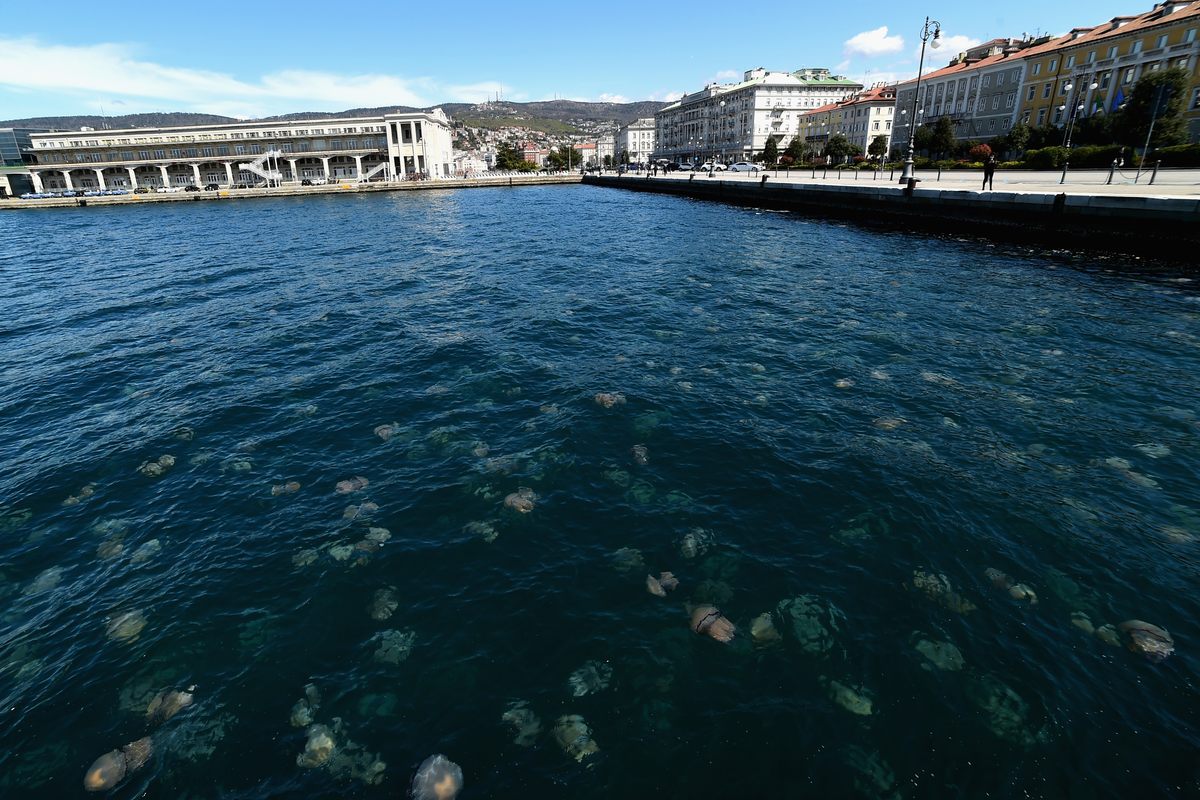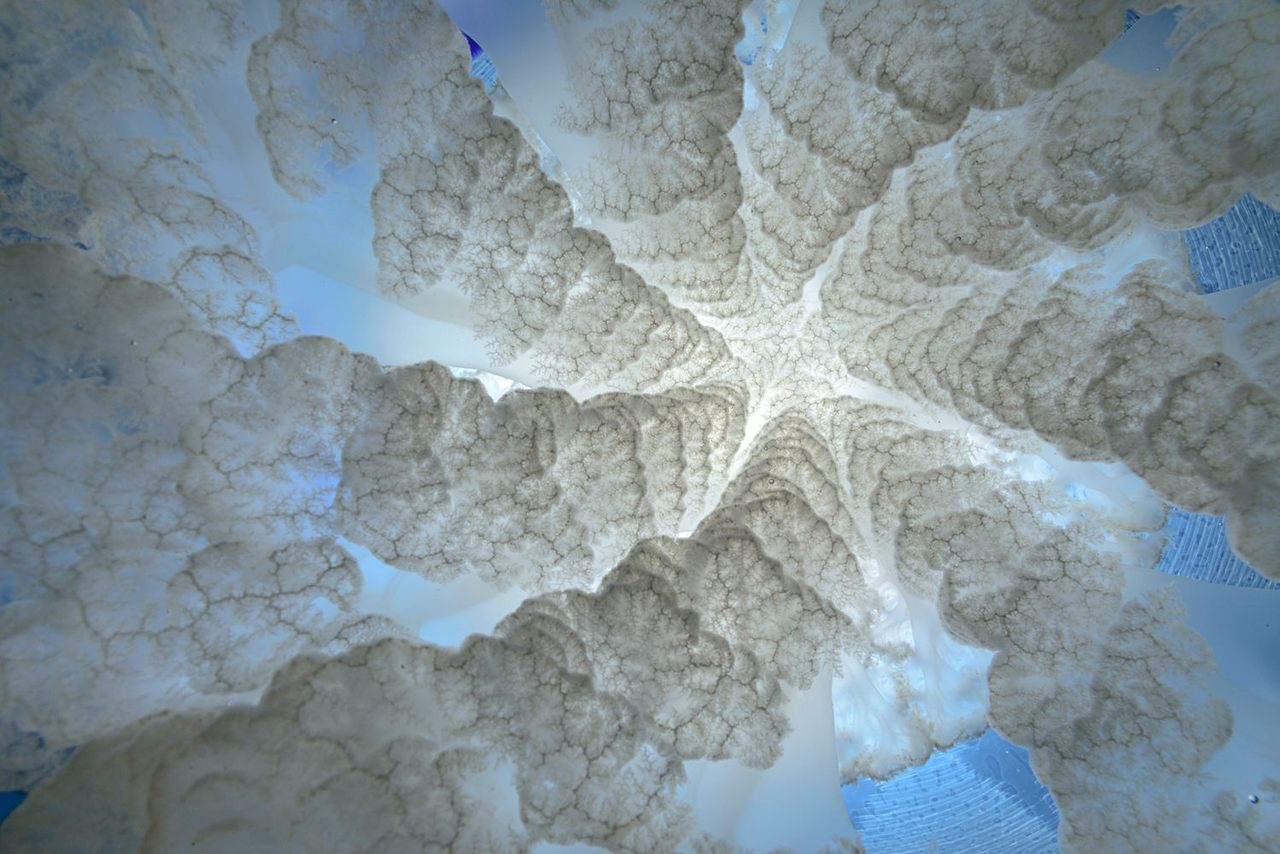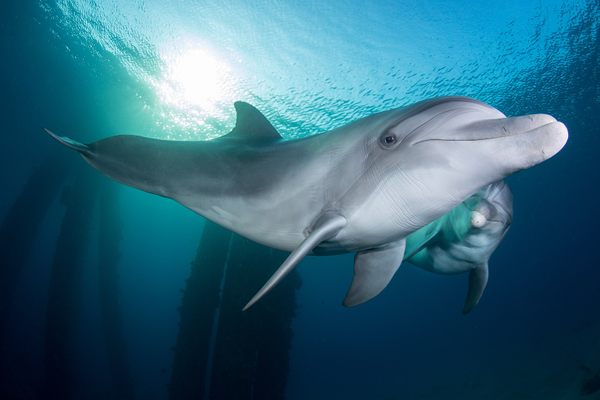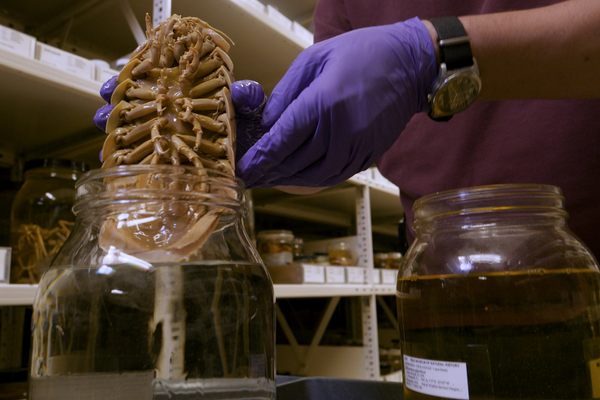See an Ordinary Jellyfish From an Extraordinary Perspective
An underwater photographer captured the stunning side of a barrel jelly, usually seen washed up on the beach as a pile of goo.
At first glance, there is nothing special about the barrel jellyfish, also known by the rather undignified name of the dustbin-lid jellyfish. Sure, Rhizostoma pulmo is one of the larger jelly species—it can grow to about three feet across and weigh upwards of 70 pounds—but it’s not the biggest, or the most dazzling. (The lion’s mane jellyfish is a candidate for those titles, though a 2019 video of an exceptionally large barrel jellyfish swimming past divers made quite a splash.)
Barrel jellyfish do sting, but they evolved to stun teensy plankton and pose little threat to much larger, relatively thick-skinned humans—online reference SeaLifeBase describes these unexceptional jellies as “rather not very irritant.” They’re not particularly smart either, as brainless jellyfish go, and often wash up on beaches because they’ve ventured into waters too shallow for their size.

R. pulmo isn’t rare or endangered: It’s common throughout its range, which stretches across much of the eastern Atlantic to the Black Sea, with high concentrations in the Mediterranean. And the species is probably going to get even more common, thanks to climate change: Jellyfish in general do well in warmer oceans with less available oxygen. In the last year, barrel jellyfish blooms in Italy, Turkey, and elsewhere have gunked up the coastal waters and beaches.

And yet what a glorious sight these dustbin jellies provide when seen as a plankter might, in its last moments, if a plankter could see as we do. R. pulmo’s puffy arms swirl like jet fighter contrails, forcing its prey toward its mouth in a gorgeous image by Spanish photographer Angel Fitor. “Natura artis magistra”—“Nature is the teacher of the arts”—Fitor declared when he shared the image on Instagram. The award-winning underwater photographer captured this shot in southern Spain’s Mar Menor, the largest saltwater lagoon in Europe. The photograph was a finalist in the Art of Nature category in the 2021 BigPicture Natural World Photography competition.
























Follow us on Twitter to get the latest on the world's hidden wonders.
Like us on Facebook to get the latest on the world's hidden wonders.
Follow us on Twitter Like us on Facebook